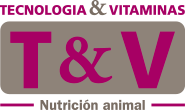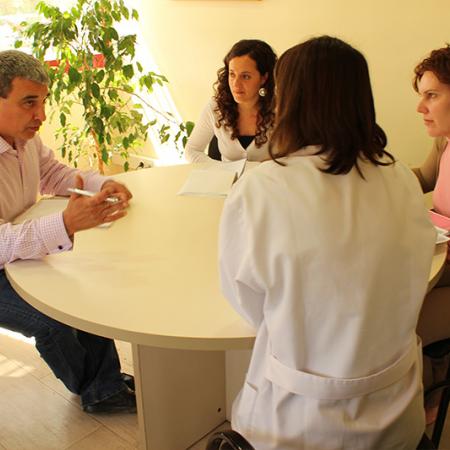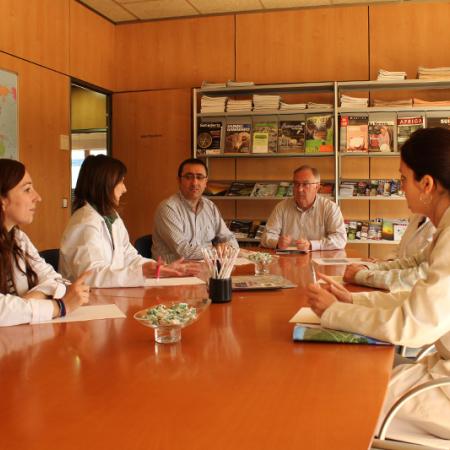Practical aspects of sow nutrition during peripartum
During the last decade we have witnessed significant genetic improvements regarding the number of piglets born per sow and year, but we also have seen that the perinatal mortality of piglets has increased over the same period.
Between 4 and 8% of fetuses are born dead according to Lende et al (2000). 6-13% of these die before birth, other 76% die during the farrow and the remaining 12-18% right after it. This mortality is based on perinatal asphyxia of the piglets in the sow uterus during the ejection.
The factors affecting the degree of asphyxia during the farrow are: labor duration, the total number of piglets born in the litter and the number of birth order.
On the other hand, speaking about the survival of the piglets, we should consider the sow dependent factors such as the start of milk and colostrum production and the piglet dependent factors such as birth weight, glycogen reserves, ability to maintain body temperature and vitality at birth.
Delivery process and the start of milk production are ruled by hormones (progesterone and prolactin).
Thus, the increased litter size leads to an increase in farrow duration, and therefore, augments perinatal mortality. It is necessary to look for the alternatives to minimize the negative impact of the situation.
A) Measures related to handling
Attention to farrows. Farrow supervision is the most effective measure to reduce perinatal mortality. Manual removal, proper use of oxytocin, calcium, drying and warming of piglets, etc.
We should facilitate rapid access to colostrum, therefore the chances of survival of piglets will increase.
B) Measures related to nutrition
We should prevent too elevated body condition of the sow in addition to constipation and urogenital problems to avoid the excessive duration of the farrow (Quesnel 2011).
The feeding programme during gestation will condition sow's body for the farrow. The sows should be monitored with some reliable system which would allow corrections in nutritional levels during gestation period.
According to Peter Ramaekers (2013), one of the factors which could affect the farrowing process and the start of milk production is a sudden change of the diet, from gestation feed to lactation feed a few days before farrow. With this change, along with a decrease of the feed quantity, we can compromise fiber intake (NDF). If less quantity of NDF arrives at large intestine, intestinal motility is impaired, which can cause constipation and endotoxemia.
This endotoxemia could suppress prolactin liberation and reduce milk production or hipogalaxia.
Regarding colostrum, it should be noted that nutrition can affect its production by influencing the development of mammary gland and affecting the mechanisms which control colostrum secretion at the end of gestation (Quesnel 2011).
The highlighted aspects are:
- Overfeeding during gestation has a negative impact on the development of the mammary gland because of excessive fat deposition
- The influence of feed restriction at the end of gestation depends on the restriction level: if it is soft and the sow has a good body condition, the influence is not noted. On the contrary, if it is severe, colostrum is richer in fat, but a sow body condition could be compromised at the time of the farrow (for ex. change from 3,4 kg to 1 kg during the last 14 days of gestation).
- There is a close relationship between sow's water consumption during 3 days after farrow and colostrum production.
During this peripartum phase a specific diet can be exploited with the additives that contribute to a better preparation to the farrow and a lactation phase:
1. Hepatic protector which allows an optimal liver functionality for the lactation
2. Highly available calcium sourses to prevent crashes which could increase stillbirths during the farrow
3. Organic acids which act on the intestine level to decrease the bacterial load of the sow's excrements during the first days after the farrow.
The tip is to maintain an adequate body condition and lower the ammount of feed only two or three days before the farrow. In the postpartum period the recomendation is to raise the daily feed ammount as soon as possible to maximum ammounts.
- 1946 reads
Adjusted production

Tecnovit present two standard production lines, products in powder and liquid. Discover the exclusive use of containers as the product being manufactured.
CDTI Development

The Center for Industrial Technological Development (El Centro para el Desarrollo Tecnológico Industrial (CDTI) is a Public Enterprise under the Ministry of Economy and Competitiveness which promotes the innovation and technological development of Spanish companies.











